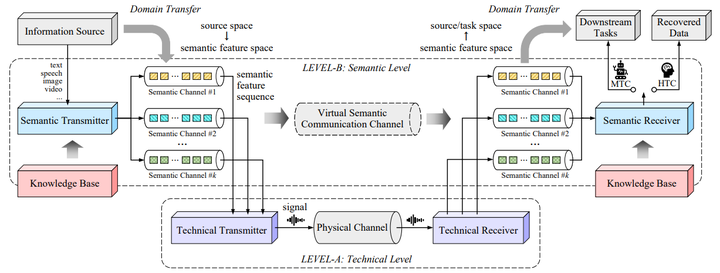A Paradigm Shift toward Semantic Communications

Abstract
The last 70 years have witnessed the transition of communication from Shannon’s theoretical concept to current high-efficiency practical systems. Classical communication systems address the capability-deficiency issue mainly by module stacking and technique densification with ever increasing complexity. From such a traditional viewpoint, classical source coding only utilizes explicit probabilistic models to compress data, regardless of the meaning of transmitted source messages. Also, channel coded transmission does not identify the source content. In this sense, state-of-the-art communication systems work merely at the technical level, as summarized by Weaver. Unlike the traditional system design philosophy, this article proposes a new route to boost the system capabilities toward intelligence-endogenous and primitive-concise communications. The communication paradigm upgrades to the semantic level, which is radically different since all the key techniques imply the use of meanings of transmitted data, thus deeply changing the design philosophy of the communication system. This paradigm shift unveils a promising direction due to its ability to offer an identical quality of service with much lower data transmission requirements. Different from similar works, this article constitutes a brief tutorial on the framework of semantic communications, its gain analyzed from the information theory perspective, a method to calculate the semantic compression bound, and an exemplary use case of semantic communications.